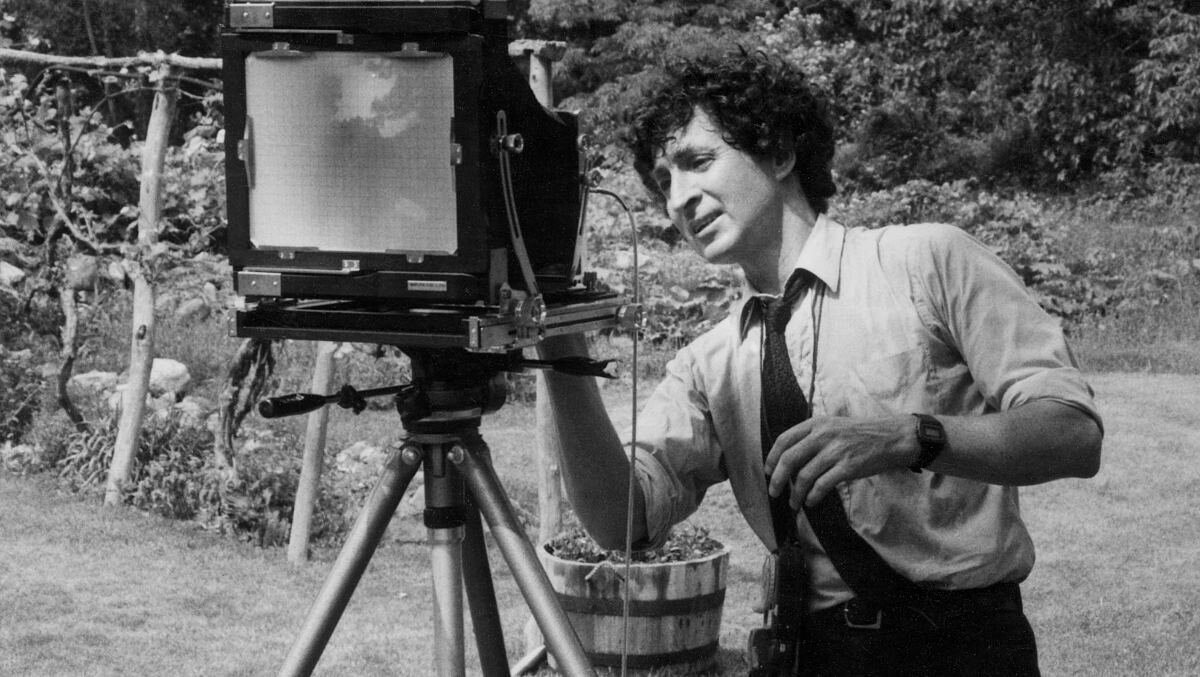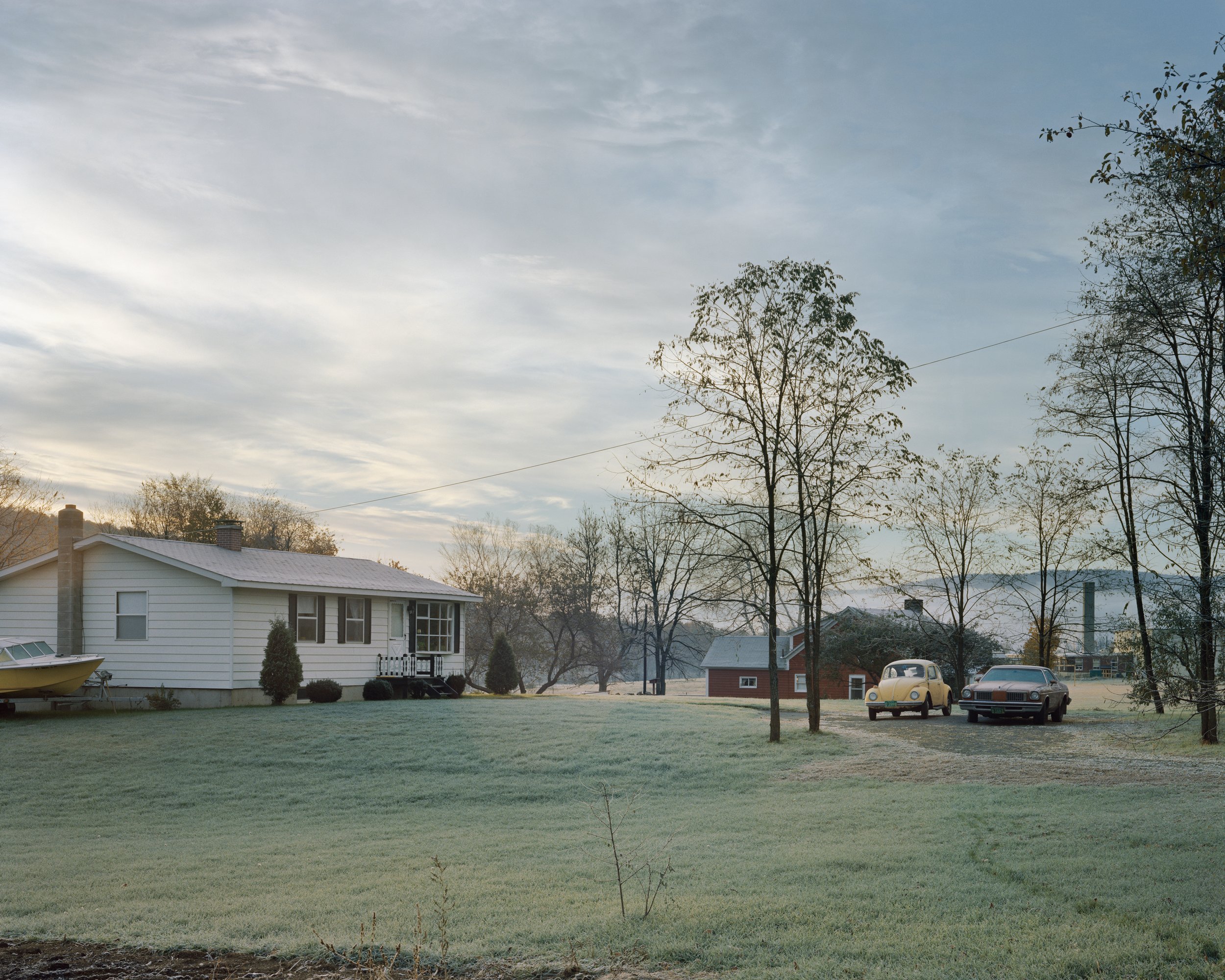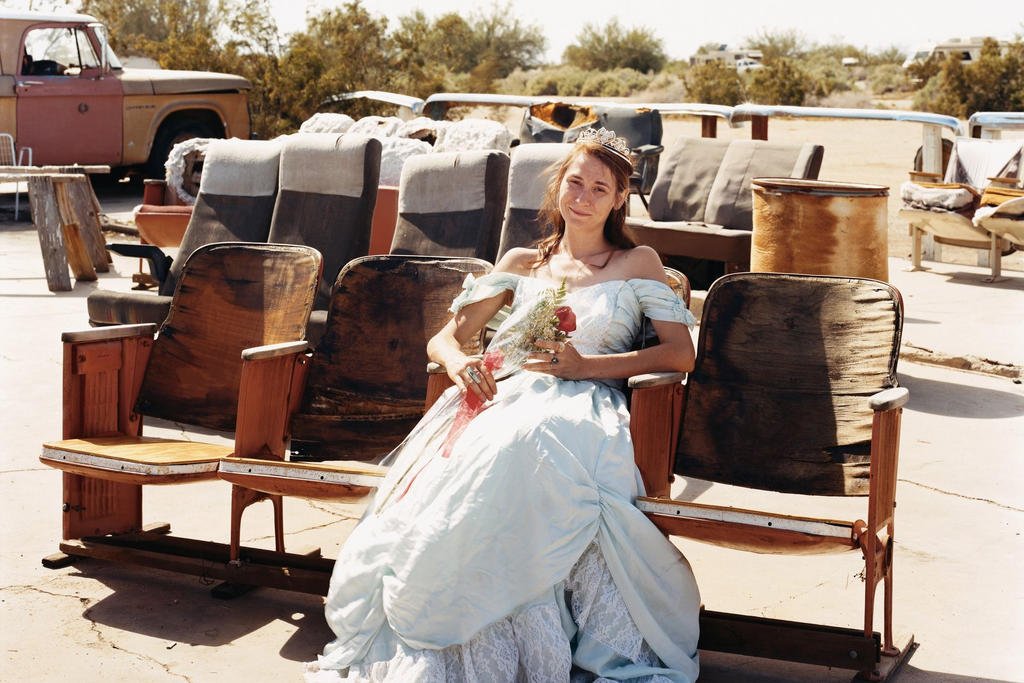Which is Better? Black and White or Colour?
“One very important difference between color and monochromatic photography is this: in black and white you suggest; in color you state. Much can be implied by suggestion, but statement demands certainty... absolute certainty.” Paul Outerbridge
"I have done no color of consequence for thirty years! I have a problem with color—I cannot adjust to the limited controls of values and colors. With black-and-white I feel free and confident of results". Ansel Adams
[6] Joel Sternfeld
Joel Sternfeld, a celebrated fine-art color photographer, was born on June 30, 1944. He is best known for his large-format documentary pictures that capture the utopian and dystopian aspects of the American experience. During the early 1970s, he mastered the art of using color photography as a form of artistic expression, a time when color was primarily associated with advertising. His contribution helped establish him as a pioneer in the field of color photography.
I believe that much of Joel Sternfeld's photography can be categorized as "street photography", even his "urban landscapes". In my opinion, the presence of a person in a photograph is not a requirement for it to be considered "street photography". Too many of street photographers shoot only people ...
Majoring in art at Dartmouth, Sternfeld had a fascination with color and the role it played in photography. “I was enthralled by Eggleston, as everybody was. But I knew if I was ever to make a mark, I’d have to go to places he hadn’t headed. He owned the poetic snapshot, but I’d always had this leaning towards narrative, and so I began to lean a little harder.”
He has been awarded two Guggenheim Fellowships and was granted a Rome Prize to spend a year in Italy.
He is a faculty member at Sarah Lawrence College and currently holds the Noble Foundation Chair in Art and Cultural History. His works are prominently featured in the collections of the Museum of Modern Art in New York and several other institutions mentioned in the "Collections" section.
In 1969, Joel Sternfeld began capturing pictures using a 35mm camera and Kodachrome slide film. This was the start of his journey in documenting the American condition. In his first works created between 1971 and 1980, which had never been exhibited or published before the exhibition at the Luhring Augustine Gallery, in 2012 – Sternfeld developed his unique conceptual and formal strategies. These strategies included narrative, humor, irony, and a politically charged perspective of America. These pictures reflect the evolution of Sternfeld's color arrangements, which eventually resulted in a new language for color photography, notably seen in American Prospects. Along with other colorists like William Eggleston and Stephen Shore, Sternfeld was a crucial pioneer in the medium. His collection of work was first published in 2012 by the Steidl publishing house.
Joel Sternfeld. Page, Arizona, 1983
Since the release of his work American Prospects in 1987, Joel Sternfeld's photography has been groundbreaking. His most popular book was last published in 2012. The book explores the complexity of human-altered landscapes in the United States. It has retained both conceptual and political aspects while being deeply rooted in history, art history, landscape theory and attention to seasonal passage. His work offers a melancholic, spectacular, funny, and profound portrait of America. Kevin Moore, the curator, believes that Sternfeld's work is an amalgamation of different photographic styles of the 1970s, blending the humor and social perspicacity of street photography with the detached restraint of New Topographics photographs and the pronounced formalism of works by many late-decade colorists (Kevin Moore, Starburst: Color Photography in America 1970-1980). Sternfeld started working on the book in 1978, when color photography was still a new medium.
He used a large-format camera to capture photographs that are reminiscent of 19th-century photography traditions. However, he applied them to everyday scenes such as a Wet n' Wild waterpark or a suburban street in the South. His photographs depict the faltering "prospects" (both views and opportunities) of the time. Sternfeld's early street work earned him a Guggenheim Fellowship, which funded his initial tour of the United States. The American Prospects photos depict people, buildings, and mostly landscapes that Sternfeld captured during his many trips between 1978 and 1984
New York City, 1973
Nags Head, North Carolina, (#1), June-August 1975
New York City, (#1), 1976
The color theories of the Bauhaus had a significant impact on his early career. Joel Sternfeld began experimenting with the Bauhaus-based idea of creating a work of art using two or three dominant hues of relatively equal density. Although color is absolute, how we experience it depends on its surroundings, the lighting, and its relationship with other colors. These ideas played a significant role in Sternfeld's style as he continuously looked for natural ways of combining colors in his environment. Regardless of the subject matter or medium, Sternfeld's photographs always revolve around the use of color. He is one of a handful of photographers who has the ability to turn a seemingly insignificant snapshot into a masterpiece, primarily by using a well-thought-out color palette.
Sternfeld says about color:
“Black and white is abstract; color is not. Looking at a black and white photograph, you are already looking at a strange world,”
“Color is the real world. The job of the color photographer is to provide some level of abstraction that can take the image out of the daily.”
"We’re at a tipping point. The digital print is becoming the look of our time, and it makes the C-print start to look like a tintype."
Sternfeld recognizes the manipulative power of pictures:
"Some of the people who are now manipulating photos, such as Andreas Gursky, make the argument—rightly—that the “straight” photographs of the 1940s and 50s were no such thing. Ansel Adams would slap a red filter on his lens, then spend three days burning and dodging in the dark room, making his prints. That’s a manipulation. Even the photographs of Henri Cartier-Bresson, with all due respect to him, are notoriously burned and dodged."
"Photography has always been capable of manipulation. Even more subtle and more invidious is the fact that any time you put a frame to the world, it’s an interpretation. I could get my camera and point it at two people and not point it at the homeless third person to the right of the frame, or not include the murder that’s going on to the left of the frame. You take 35 degrees out of 360 degrees and call it a photo. There’s an infinite number of ways you can do this: photographs have always been authored."
For him, the philosophy of shooting is:
“No individual photo explains anything. That’s what makes photography such a wonderful and problematic medium. It is the photographer’s job to get this medium to say what you need it to say. Because photography has a certain verisimilitude, it has gained a currency as truthful – but photographs have always been convincing lies.”
“You take 35 degrees out of 360 degrees and call it a photo,” he told the Guardian in a 2004 interview. “No individual photo explains anything. That’s what makes photography such a wonderful and problematic medium.”
Campagna Romana: The Countryside of Ancient Rome is a book that was first published in 1992 by Knopf publishing house. The book documents the interaction between the grand romantic ruins of ancient Rome and the invasion of modernity, through a series of extensive photographs of the countryside around Rome. Joel Sternfeld was awarded the Rome Prize fellowship, which allowed him to capture the sweeping vistas of the countryside in panoramic images that sometimes stretch over several images. This technique sets up contrasts between the images within each piece, presenting the beauty of the countryside alongside the contrasting modernity. (One of the works in the book features a crumbling fragment of an ancient wall surrounded by the scaffolding-clad buildings of a new apartment complex. The image is part of a four-panel piece that showcases the stark contrast between the ancient and modern elements of the city.)
On This Site: Landscape in Memoriam, was first published with Steidl in 1996. It's a collection of pictures taken at famous crime sites in America. The locations, which appear eerily normal, are the remains left behind after tragedies. The hidden stories behind these sites are disturbingly invisible. Next to each photograph is a text that describes the events that took place at that location. Through his work, Sternfeld examines violence in America and raises significant epistemological questions about photographs as objects of knowledge.
Joel Sternfeld worked with Melinda Hunt between 1991 and 1994 to document New York City's public cemetery on Hart Island. This collaboration resulted in the book Hart Island which was published in 1998.
Stranger Passing is a series of portraits initially published by Bulfinch in 2001 and then by Steidl in 2012. The project has its roots in Sternfeld's initial project "American Prospects". Over fifteen years, he traveled across America and captured portrait photographs that represent an "intelligent, unscientific, interpretive sampling of what Americans looked like at the century’s end," according to Douglas R. Nickel. Unlike historical portraits that depict significant people in staged surroundings, Sternfeld's subjects are surprisingly ordinary. They include a banker having an evening meal, a teenager collecting shopping carts in a parking lot, and a homeless man holding his bedding.
Sternfeld is known for his distinctive style of combining still photography with a written narrative, which he uses to explore new possibilities in storytelling. His books and collections are interconnected and offer a collective interpretation of his work. Sternfeld's art aims to blend time and place, while conveying important messages of enlightenment, honor, and warning. His images are particularly urgent, given that their histories are preserved only through photography, making them an archive for future generations.
In the last decades, Sternfeld has concentrated his efforts on a four-book project:
Sweet Earth: Experimental Utopias in America (2006), offers a refreshing break from the traumatic history depicted in On This Site. The book provides a survey of alternative ways of living and hopeful being in American human society.
When It Changed “Future generations are going to wonder about us, the inhabitants of the Earth when the climate began to change. If seas are rising and at the same time drinking water is scarce, they are going to want to know what scientific evidence was before us and what we did in response to it. It is difficult to imagine a time in the past without an image, so I went to Montreal in 2005 to photograph the participants in the eleventh United Nations conference on climate change.” Joel Sternfeld
Oxbow Archi Joel Sternfeld visited the mile-square field that Thomas Cole painted in "The Oxbow" almost two hundred years ago. In 1978, Sternfeld photographed the same field as part of his "American Prospects" project. When he returned in 2006, he discovered that an interstate highway had been constructed across the Oxbow in the river, and the detrimental effects of progress that Cole had foreseen were becoming increasingly evident globally due to climate change.
iDubai. IJoel Sternfeld uses his iPhone camera to capture the human side of the Emirate, beyond the mass media portrayal as a version of Disney World on the Persian Gulf.
QUOTES:
“With a photograph, you are left with the same modes of interpretation as you are with a book. You ask: 'What do we know about the author and their background? What do I know about the subject?'“
“I’ve worked primarily with the American landscape– my approach has to be look at the landscape to find a kind of beauty as it truly exists. Looking at landscape about what it reveals about the human moment, past, and the present human moment. I mean this is the surface of the earth, and what we do with it tells us an awful lot about ourselves.“
“One project has grown into another, and into a long chain of work that has kept me engaged for 30 years.”
“All of my work has been about ideas of utopia and dystopia. I think that's what gives America interest. It's many things all at once. It's such a complicated society.”
“I grew up in Belle Harbor, which is in New York City, but it has the most powerful sense of nature and seasons. It wasn't even the beach and the water. I just dreamt about everything that had to do with nature. I read about Thoreau”
“No one can say how long the process of human extinction might take, but as it proceeds, the same global order will prevail that always prevails: rich nations will find ways to protect themselves and make themselves comfortable, while the poor nations and the poor people of the planet will suffer.”


















